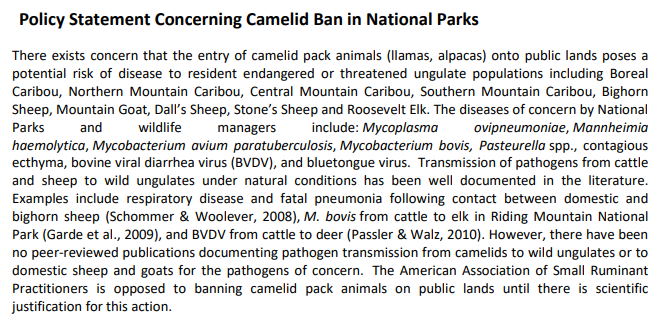There are studies that prove goats have and can transmit to wild sheep. Whether these are ‘pack’ goats or if it matters, I’m not sure.
They did transmit to wild sheep at a lower rate than domestic sheep did, however.
I’ll try to dig it up. If I recall, they were captive, nose to nose contacts performed in a study.
I addressed some issues related to goats in this post. Folks should read the paper I linked in that post, as well as the Rio Grande Gorge anecdote. I believe Kezia Manlove is writing a paper on the Gorge.
Dr. Thomas Besser at WSU did some studies with goats that showed that Wild sheep did contract disease from the domestic goats but it was a more mild reaction. It would have been interesting if he followed that up with a study that then exposed those same sheep (now recovered from the goat exposure) to domestic sheep with M. Ovi. to see if the goat exposure provided any immunity.
Several closed pen studies going back to 1994 have demonstrated no transmission of disease between llamas and wild sheep.
This is an overly broad statement given how some of the studies in the 90s were conducted, what they were measuring in those studies, and how our knowledge of emerging infectious diseases in camelids has improved since then.





